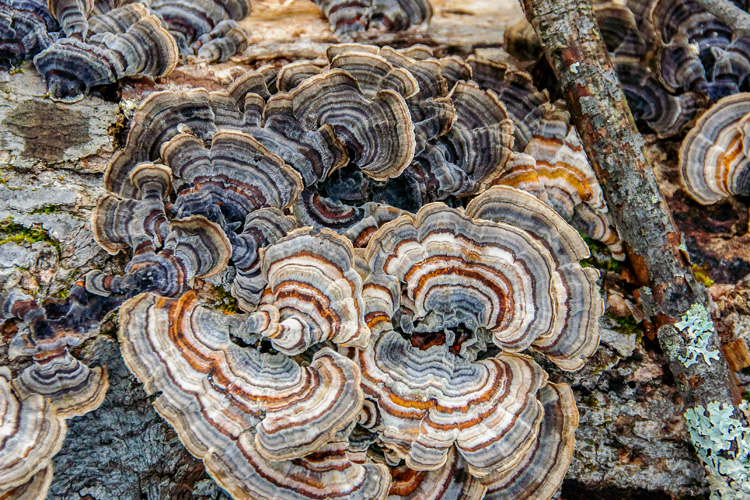In case you’ve been living under a rock, you may not have noticed it’s been a banner year for mushrooms (although, “under a rock” might not be the worst place to find evidence of fungi). The classic “stem-and-cap” mushroom is typically the first thing that comes to mind when most folks think of a fungus, but estimates indicate there may be more than 2-3 million species of fungi worldwide, outnumbering plants by 10-to-1!
Biologists initially thought fungi were a part of the Plant kingdom since they have a similar lifestyle: largely immobile, often grow in soil, and produce “fruit” or fruiting bodies. However, Fungi received their own kingdom distinction in 1969 and it is now believed that fungi are actually more closely related to animals than plants—they are both “heterotrophic,” meaning they can’t produce their own food like plants, which photosynthesize. In short, both fungi and animals eat other things to get their energy, using digestive enzymes.
So the next time you’re in the produce section at the grocery store and reach for a package of mushrooms, remember that you may be more closely related to those baby bellas than the avocados across the aisle!
Here are five fantastic fungi you can enjoy thanks to submissions to our annual Picture This: Your Great Outdoors photo contest. Visit our website to see and download a handy Fungi By the Numbers guide and keep an eye out for fungi on your next nature walk.

“Bear Tooth”, Hericium americanum © John Zywar

“Fly Amanita”, Amanita muscaria © Bruce Gilman

“Onion Bagel Pholiota”, Pholiota aurivella/limonella © Ed Anzures

“Turkey Tail”, Trametes versicolor © Kathryn Dannay

“Yellow Morel”, Morchella esculentoides © Brigitte Flick


 Perhaps the strangest things that you might see each spring are the bright orange globs hanging in the eastern red cedar trees. They look a bit like orange marmalade being pushed through a garlic press. Moist to the touch and about the size of a golf ball, these ornaments adorning the cedars are actually fungi.
Perhaps the strangest things that you might see each spring are the bright orange globs hanging in the eastern red cedar trees. They look a bit like orange marmalade being pushed through a garlic press. Moist to the touch and about the size of a golf ball, these ornaments adorning the cedars are actually fungi.